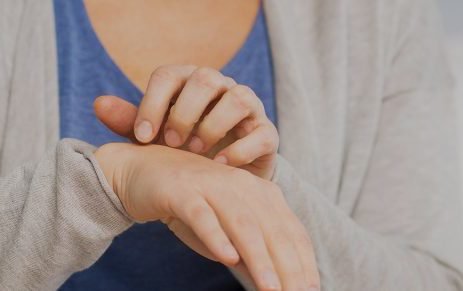Scabies Treatment
Scabies is a contagious itchy rash caused by mites. While anyone can potentially be affected, it’s most often seen in children and the elderly.
It is important to get scabies treated as quickly as possible in order to soothe symptoms and prevent further complications. Get in touch today to find out how the team at The Dermatology Clinic can help.

Scabies is very common, and it can take up to eight weeks for the rash to appear. Find more information below about scabies, and treatments available at The Dermatology Clinic London.
About scabies
The main symptom of scabies is an extremely itchy rash caused by mites known as Sarcoptes scabiei. These tiny parasites cannot be seen with the naked eye. The mites eat at the outer layer of the skin, causing a red mark. If you become infected, it can take up to eight weeks for symptoms to appear. This is because it takes time for our bodies to develop a reaction to the mites.
Scabies mites are attracted to moist, warm areas and rashes most commonly appear in the following areas:
- under the fingernails
- in the webs of the fingers or toes
- external genitalia
- between the buttocks
- beneath the breasts
The rash looks like tiny insect bites and small curves. The curves are created by the mites “burrowing” into the skin. As the condition is extremely itchy, you might be able to see inflamed scratch marks and scabies can often look like eczema.
Scabies treatment
The most successful treatment used at The Dermatology Clinic is a medicated cream. This cream contains a highly effective component called permethrin, which kills the mites. Another medicated lotion called Malathion has also been proven effective and is often prescribed by our consultant dermatologists.
If you have a severe form of scabies and the rash has become encrusted, we can provide oral medication called Ivermectin to reduce the symptoms. Once treatment for scabies has been prescribed, we will provide you with important advice on how to prevent re-infection.




